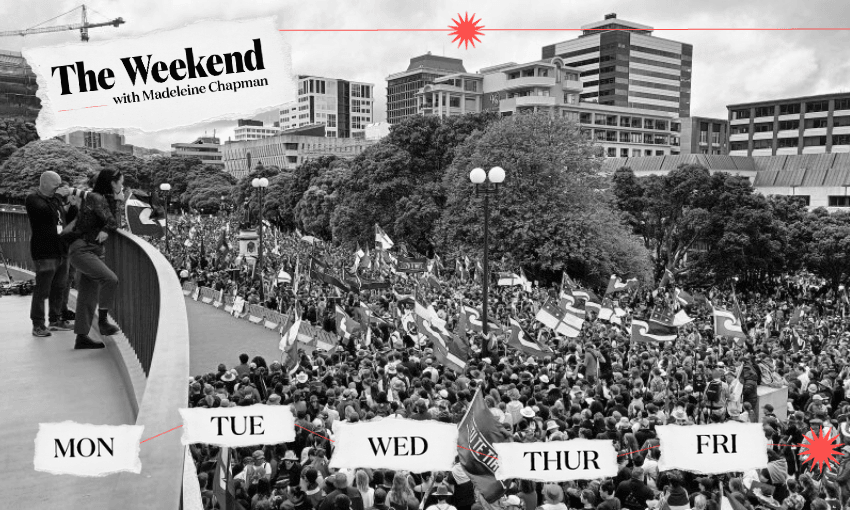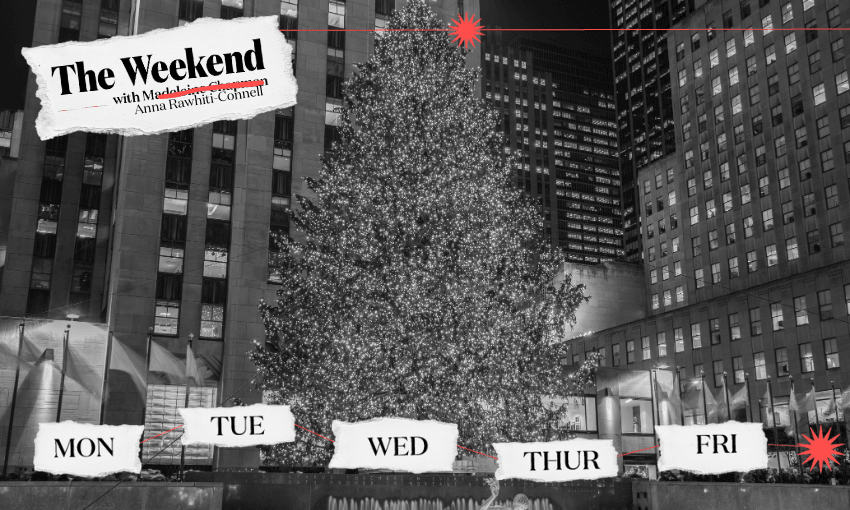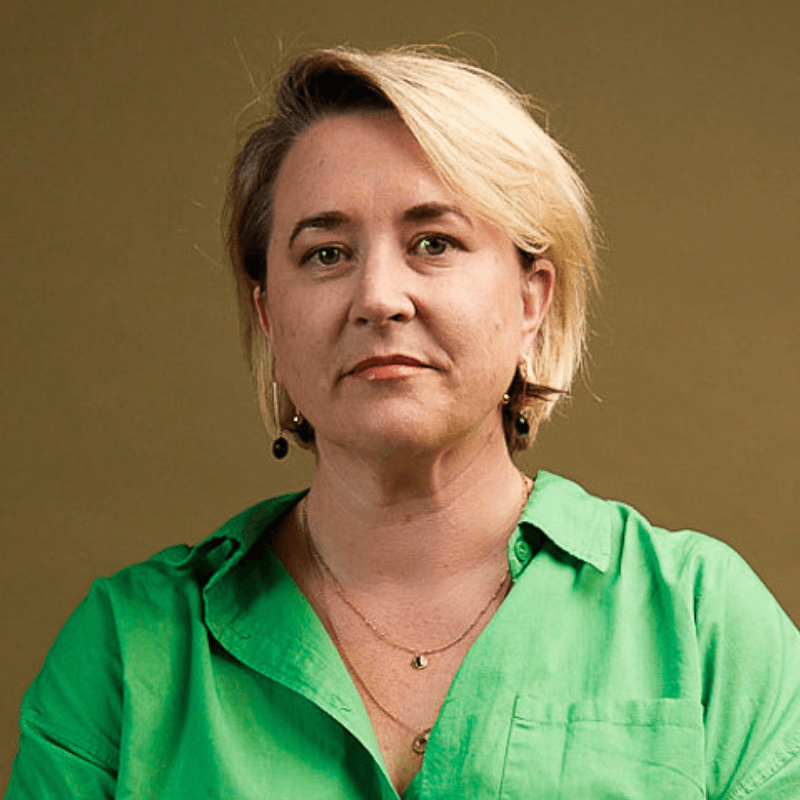Madeleine Chapman reflects on the week that was.
When I was a junior writer at The Spinoff, Simon Wilson joined the team as Auckland editor. He’d been the editor of Metro for many years and was easily the most experienced journalist in the room. So if we both happened to be working late on stories, I’d pick his brain about his career and, eventually, his life.
One night, the topic of the 1981 Springbok Tour came up. I was not alive then and knew very little about it beyond the YA novels I’d read in primary school and occasional news articles on anniversaries of the protests. Simon was alive, and told me that he was part of a protest at Wellington Airport. In fact, he had run onto the runway. I was so shocked, mostly because I had never considered that Simon had participated in historic events, only that he had written about them.
As someone who did not grow up around protests, they always felt like another world to me. A world where people were so angered by something they were willing to paint signs, march in the streets and even get arrested to make their point. It surprised me to learn as a teenager that everyone in those protests was just a regular person who cared about something.
A lot of journalism work involves talking to people protesting something. It might be a 50,000-strong hīkoi or 100 workers striking. It could be a whole community advocating for their needs or just one family who’s been through a shocking ordeal and doesn’t want anyone else to experience what they have. Even those funny photos of residents with their arms folded, looking sternly at a cycleway, are protest shots.
Journalism is all about writers sharing other people’s protests, so it’s rather ironic that once you become a journalist, it’s frowned upon to be a protester yourself. As media, it’s easy to use work as a reason to stay away from protests in a personal capacity (even things as simple as an online petition) but the sheer volume of demonstrations this year has made me wonder what I, free from the rules of the media, would paint a sign and march in the street for.
Accompanying the hīkoi this week was a 280,000-signature petition to scrap the Treaty principles bill. It was suggested that this might be the biggest petition in New Zealand history. Turns out it’s not even close. Rather bleakly, the biggest petition ever presented to parliament was in 1985 and signed by a whopping 800,000 New Zealanders (though it was later suggested to be closer to 600,000). The cause? Opposing the decriminalisation of homosexuality.
For tens of thousands of New Zealanders, that would have been the first time they put their name in support of a cause. For many, it would also be the last. A single, public expression of opinion, their first time feeling enough fear or anger to protest.
The petition didn’t work, and I’m sure a huge portion of New Zealand was angry about it. But it’s interesting to note the sheer volume of opposition to something that would positively impact the lives of relatively few and not at all impact the lives of everyone else.
Something like the Treaty principles bill would affect every New Zealander in some way, but Māori would be impacted the most.
A new narrative in this week’s hīkoi was the massive growth in Pākehā participation compared to the foreshore and seabed one 20 years ago. I saw people posting from the protest who I’ve never seen post anything remotely political before, let alone show up in person at a demonstration. For many, it would be their first time having a reason to march. Will it continue?
This week on Behind the Story: The apology and the hīkoi
Last week, staff writer Lyric Waiwiri-Smith attended the Auckland event of the national apology to survivors of abuse in care. That historic event was quickly followed by another, with the nine-day hīkoi arriving in parliament to protest a number of government decisions, particularly the Treaty Principles bill. Lyric and Ātea editor Liam Rātana reported on the hīkoi as it passed through Auckland. As journalists, these were big stories, but as Māori journalists, they held an even greater weight and sense of responsibility to tell them in the right way. It’s a responsibility not shared by most other journalists in New Zealand, and one that can be hard to leave at work at the end of the day. Lyric and Liam join editor Madeleine Chapman on Behind the Story to discuss the apology, the hīkoi, and the challenge of separating work and life when your work involves reporting on your own lived experiences.
Listen here or wherever you get your podcasts.
What have readers spent the most time reading this week?
- Following last week’s incredible ranking of Christchurch malls, we finally decided it was now or never on doing the mammoth ranking of all the malls in Auckland. Published yesterday, it’s already the story readers spent the most time with this week
- My opinion on who gets to have an opinion on the hīkoi and who must remain ‘impartial’
- Our live blog from the day of the hīkoi Live updates: Hīkoi concludes as attention shifts to inside parliament
- Lyric Waiwiri-Smith catalogues the best signs from the final day of the Toitū Te Tiriti hīkoi
- Toby Manhire outlines how Luxon’s position on the Treaty Principles Bill has changed over time
Comments of the week
- On All 33 malls in Auckland ranked from worst to best
“Thoughts:
I felt sad to see the Plaza at the beginning (last place) of the list but fully understand why.
While Manukau is mostly a very good mall, the thing it really lacks since Whitcoulls pulled out is a book/stationery shop.
- On Was the hīkoi New Zealand’s largest-ever protest?
“After the hikoi I asked my 10 yr old son to
What it was like to be at the hikoi:
So many people from other countries where supporting the hikoi to protect our culture from being destroyed tahi rua toru wha seymore is a hoha hoha hoha. I really enjoyed it although my legs were really tired but lots of respect for those who did the longer walk. It was really important to do this for future generations.”
Pick up where this leaves off
Sign up for Madeleine’s weekly Saturday newsletter, which includes more handpicked recommended reading, watching and listening for your weekend.




